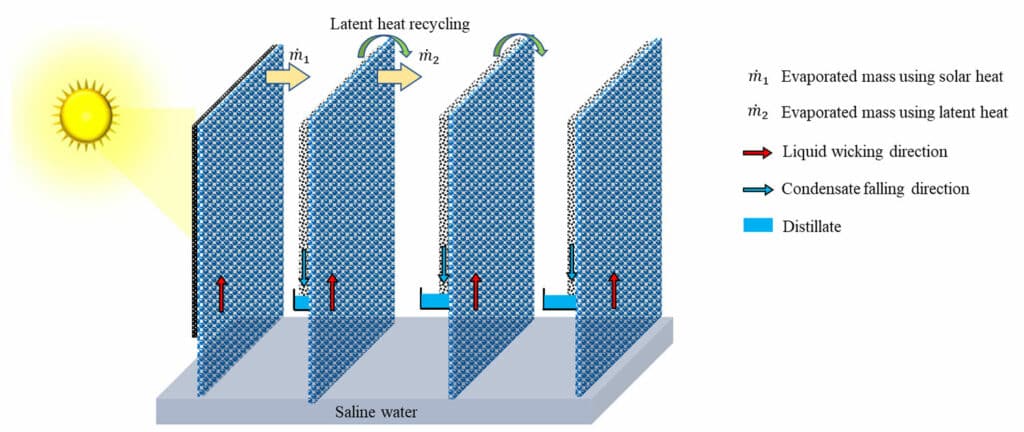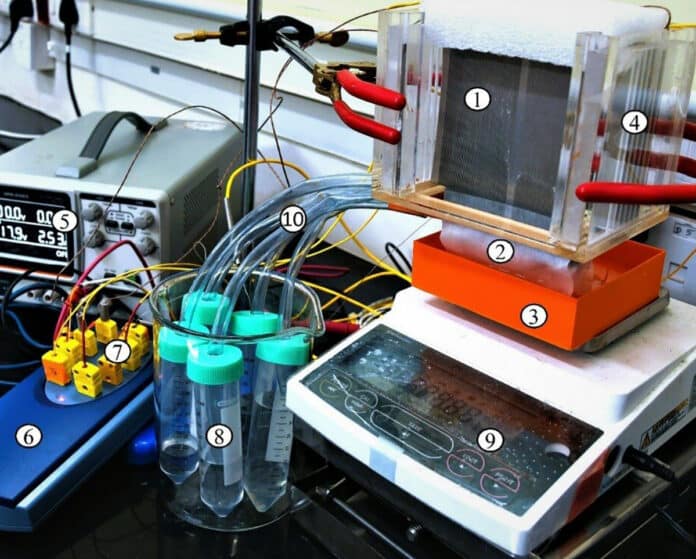Climate change is already hurting water access for people around the world. Seawater is viewed as an inexhaustible supply of freshwater via the process of seawater desalination. As a result, seawater desalination is becoming more popular, especially in areas where freshwater is scarce. The most common desalination technology installed worldwide are membrane-based reverse osmosis and thermal desalination, but both consume a lot of energy.
Researchers at the Indian Institute of Science (IISc) have developed a novel thermal desalination system that works using solar energy as a possible solution to increase the availability of clean, potable water. Researchers say their solar-powered desalination unit is more energy-efficient, cost-effective, and portable, making it convenient to set up in areas with limited access to continuous electricity.
The new system comprises a reservoir of saline water, an evaporator, and a condenser enclosed within an insulating chamber to avoid heat losses to the ambient air.
The system uses solar thermal energy to evaporate a small volume of water imbibed or “wicked” into a textured surface evaporator made of aluminum. The wicking of liquid into the evaporator takes advantage of the capillary effect of microscale textures. This effect allows liquids to be drawn into narrow spaces of a porous material, much like water being absorbed by a sponge. The approach avoids heating the entire reservoir and significantly improves energy efficiency, says Susmita Dash, corresponding author of the study.

The new system is designed in such a way that the heat released during condensation is also trapped and utilized to heat up the imbibed saltwater in a different evaporator at the backside of the condenser. The condenser reduces the amount of solar energy needed and increases the system’s efficiency even more.
The team also successfully connected multiple evaporator-condenser combinations in a series, resulting in a multi-stage solar desalination system. If built in a footprint area of 1 m2, this system can produce one liter of potable water every 30 minutes – at least twice as much as that produced by traditional solar still of the same size.
The system can also work with groundwater containing dissolved salts as well as brackish water. It can be adjusted to align with the shifting positions of the sun during the day.
Researchers are currently working on scaling up the system, improving its durability, and increasing the volume of drinking water produced so that it can be deployed for domestic and commercial use.
Journal reference:
- Nabajit Deka, Susmita Dash. Multistage interfacial thermal desalination system with metallic evaporators. Desalination, 2023; DOI: 10.1016/j.desal.2023.116576
